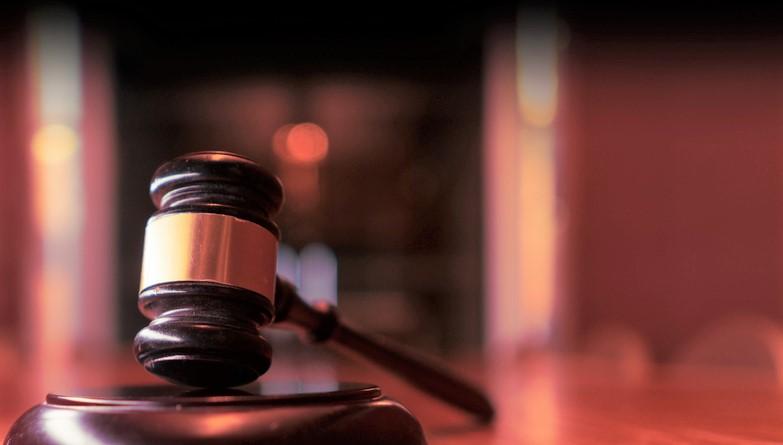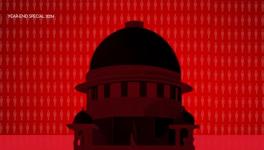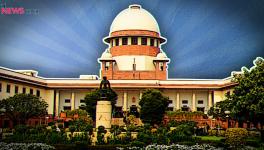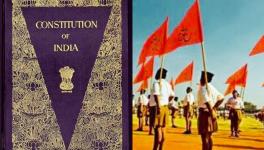79% of High Court Judges Appointed Between 2018-2022 Upper Castes: Law Ministry

Representational Image. Image Courtesy: iStock
According to Indira Jainsing, in an article written on December 26 for The Leaflet, "The Supreme Court faces an existential crisis in the face of the attack it is facing under the ruling dispensation. It is now more than obvious from the speeches made by the Union Law Minister and the Vice-President that the Collegium is under attack. While the system requires bearing in mind the need for diversity of judicial appointments, surely the cure is worse than the disease."
In such a background, as per A report published in The Times of India (TOI), the issue of the unequal representation of backward and minority communities in the higher judiciary is evident from the fact that 79% of all high court judges recruited in the last five years (2018-2022) are from upper castes is making headlines in media reports. According to TOI reports, the shocking figures have been revealed by the Union Law Ministry in a presentation before a parliamentary panel.
The Law Ministry made the above disclosure before the Parliamentary Standing Committee on Law and Justice and pointed out that despite three decades of the existence of the collegium system of appointment of judges, the social diversity in the higher judiciary, which was initially devised by the Supreme Court, is completely missing in these appointments.
This fact is shocking to all that the appointments made in the 25 High Courts of the country are mostly from the upper castes. It refers to "discrimination" in appointments to the institution, with the Other Backward Classes (OBCs), who account for more than 35% of the country's population, accounting for less than 11% of appointments to benches and seats in constitutional courts.
Another aspect of this alleged discrimination is that of the total 537 judges appointed to the High Courts since 2018, only 2.6% have been appointed from the minority community. Similar is the story of the Scheduled Castes and the Scheduled Tribes, ranked at 2.8% and 1.3%, respectively.
According to the Law Ministry, "Addressing the issue of social diversity and social justice in the process of appointment to constitutional courts is the primary responsibility of the Supreme Court Collegium and the High Court Collegium."
The Law Ministry, while stating the above position before the panel, expressed its helplessness and said that priority had been given to the judiciary in matters of appointment of judges. Therefore it needs to be addressed by the judiciary itself.
A collegium of judges functions at two levels - the Supreme Court and the High Courts. While the 4-member Supreme Court collegium, headed by the Chief Justice of India, prepares proposals for appointing judges to the apex court, the 3-member Collegium of high courts, headed by chief justices, recommends the names.
Through letters to the Chief Justice and Chief Justices, the Law Ministry has stressed the need to "address the issue of social diversity and social justice" in the higher judiciary. In its presentation before the Parliamentary Standing Committee on Law, it noted that the primacy of the Collegium in the appointment of judges had not removed the existing disparity. It states, "The government appoints only those people as judges of the Supreme Court and High Courts, who are recommended by the respective Court Collegium."
The Ministry, however, has also clarified that the principle of appointment of High Court Judges, as per Articles 217 and 224 of the Constitution, "does not provide for reservation for any caste or class of persons. It has been urging the Chief Justices that while sending proposals for the appointment of judges, due consideration should be given to suitable candidates belonging to Scheduled Castes, Scheduled Tribes, Other Backward Classes, minorities and women to ensure social diversity.
Whenever the Supreme Court Collegium sends recommendations, the Law Ministry examines them, and the Intelligence Bureau conducts a background check of the recommended candidates, and then a detailed report including the High Court Collegium's recommendations is sent to the Supreme Court Collegium for their advice. Then after the names are cleared by the Supreme Court collegium, the central government notifies the appointments.
In case of disagreement between the government and the apex court, the government sends back such names to the SC collegium for reconsideration. But once the SC collegium reiterates the same name, the government is bound to appoint that person as a judge per the existing collegium system.
SITUATION SIMILAR IN OTHER INSTITUTIONS
This situation is present not only in the courts, where there is no reservation provision. The situation is more tragic in those institutions where reservation exists for the disadvantaged sections. It is the constitutional responsibility of the institutions to fill vacancies in these sections. For example, in the case of AIIMS, out of 1,111 faculty positions, a total of 275 positions for assistant professors and 92 positions for professors lay vacant. However, following media reports, the Parliamentary Committee stated in its report that despite being qualified, competent and experienced reserved category doctors were not being appointed to faculty positions.
A similar case was also found in the media. A report released by Oxfam India-Newslaundry showed that upper-caste people hold 90% of top media positions in India. The shocking fact is that not a single dalit or adivasi is not part of the mainstream media leadership.
From the above facts, one can guess that discrimination against dalits/tribals is institutional and systematic, but minorities and other backward classes are also victims of it. Even in the 'golden age of independence', these sections are fighting for their existence, and the funny thing is that no one is listening.
Get the latest reports & analysis with people's perspective on Protests, movements & deep analytical videos, discussions of the current affairs in your Telegram app. Subscribe to NewsClick's Telegram channel & get Real-Time updates on stories, as they get published on our website.
























